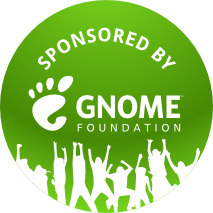I’ve been wanting to write a post on GNOME.Asia and the going ons with engagement for awhile, but never seemed to get the motivations to blog. 🙂
GNOME.Asia was an amazing event and I wanted to reach out to the organizers and thank them for the wonderful reception that I received while I was there. The trip to Chongqing was mostly uneventful other than the fact every Chinese official was gunning for my battery brick when going through airport security. After a long layover in Beijing, I was landed in Chongqing and met up with Mathias Clasen and proceeded to head to the hotel.
Next day, we went on a wonderful trip to some caves in the local area that Lennart found in Lonely Planet. We were very lucky to have Jonathan Kang with us to speak the local language as it would have been a challenging trip otherwise. But we got to see some really interesting statues that were many centuries old. There was one really especially interesting one that showed the Bodhisvatta with a thousand hands. It definitely had a presence! We came back in time to attend the reception although we were a little late.
I was lucky to have my talk on the first day which allowed me to not have to worry about my talk for the rest of the conference. This was my first time going to a GNOME.Asia conference and everything was impressive. First conference I’ve been to where there was a mini-drama with a fire-blower/fire-eater. That definitely left an impression!
I gave my talk shortly after the intro, and it was well attended and I think people enjoyed it. Most people know me that I tend to get a little energetic while on stage.
The rest of the conference, I enjoyed going to the english speaking talks, meeting with conference attendees, selfies, and everything else. We had a day for BoFs and of course, we had an engagement one. Well, Nuritzi and I had an engagement BoF. 🙂 Apparently, writing code is still the sexy thing to do. 🙂
The conference did drive an impetus to harness the energy in Asia, and not just China, but India, Japan, S. Korea and so forth. And after the conference, we started working in earnest to start organizing to bring in new members from Asia.
We had a lovely party on a ship, and a tour of Chongqing at night, that was really impressive. Chongqing is really large, like one city the size of the Bay Area and possibly a larger population. There was much fun to be had and of course more pictures and selfies and the like.
The next day was a walking tour of the city that our new friends took us around in the city. The city reminds me a lot of Portland, simply because it was perpetually raining and foggy. Which kept the pollution to a minimum. The food was delicious and very spicy. I’ve come to have a love/hate relationship with the szechuan pepper which while I like the spice, wasn’t overly fond of the numbness it causes. Where in the cities on the west coast, the smell of cannibis shows up, so does the aroma of szechuan peppers in Chongqing!
I went shopping on the last day of my trip there and finally the next morning headed back to Denver. Chinese security confiscated my power brick of which I was quite irate about. I had that thing for 3 years, and I hated letting it go. Of course as luck what have it, I needed it charged by the time I got out in Denver and had to spend an extra hour to charge my phone in order to go home. 🙁
Post conference, there has been a lot of re-organization to accommodate the Asian members of GNOME engagement. We have moved to a new time and hopefully we can use some of amazing talent that some of our new members have in some of the engagement things.
Thanks to Carlos, we were able to also start using gitlab as a way to project manage social media and you’ll find that in the past 6 weeks that GNOME engagement social media are tracked in issues, and are getting completed. The side effect is that work done by the engagement team are no longer opaque and instead the entire project can see what the team is doing. Our engagement internally with the rest of the project has improved markedly. We hope to continue making progress and improving the engagement team. Our meetings are half discussions and have work sessions so that we remove items out of our todo.
There has never been a better time to get involved with GNOME engagement. As a recent blog post by Christian Hergert has underscored, the project in order to grow needs to be able to have non-coding skills like project management, graphics artists, designers, and community managers. We’re also a bit of a counter-culture group compared to the rest of the project. So if you are interested in the people behind GNOME, the users of our software, or solving humanistic problems, come join us and let’s chat!
I would like to finally thank the GNOME Foundation for sponsoring my trip to GNOME.Asia. I would not have been able to go otherwise.


